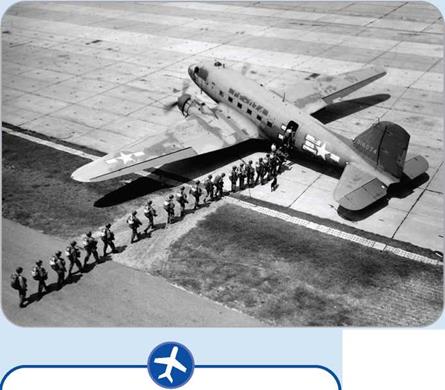Into the Jet Age
When World War II came to an end, hundreds of DC-3s no longer required by the military were quickly snapped up by airlines desperate for aircraft with which to start postwar passenger services. The DC-3 continued to do a valuable job even in the jet age, being used in civil aviation, in the military, and in scientific work. In 1956, a DC-3 flown by the U. S. Navy became the first airplane to land at the South Pole, while assisting an Antarctic expedition named Operation Deep Freeze. The DC-3 design was so effective that it never had to be radically altered. The plane did not change much during its sixty-plus years of service.

![]()
THE ADAPTABLE AIRLINER
Very few aircraft have been built in as many versions as the DC-3. It is truly one of the great multipurpose aircraft in aviation history, with about 100 different versions developed over the years for different tasks. Some of those versions are:
• TC-47B Navigator trainer.
• XC-47 Experimental floatplane.
• AC-47D 1965 version with three 7.62-millimeter machine guns.
• SC-47D Search and rescue model.
• C-53 Skytrooper with twenty-eight seats and glider-towing hook.
• C-53B 1942 version with special Arctic equipment.
• E4D-4 U. S. Navy model, later adapted for electronic countermeasures.
О In 1946, a C-47 is used to take paratroopers on a practice jump at Fort Benning, Georgia.










